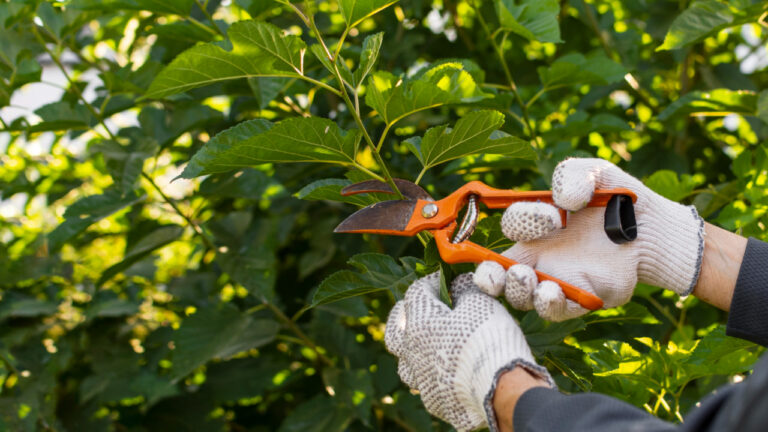Root Care Basics: Ensuring the Health and Stability of Your Trees from the Ground Up
The beauty, health, and longevity of your Rock Hill, South Carolina landscape start at the root of your trees—quite literally. Trees with healthy, well-established root systems are better equipped to handle environmental challenges and stressors, ensuring that your greenery remains stable and visually stunning. However, tree roots are often neglected when it comes to tree care and maintenance.
This article will discuss the fundamental principles of proper root care techniques and soil management practices that promote healthy root growth and development. We will cover topics such as understanding the importance of aeration, proper irrigation, nutrient management, compaction prevention, and recognizing common root-related problems.
1. Aeration: Encourage Root Growth and Soil Health
Proper aeration is essential for maintaining healthy root growth. Aerating your soil ensures that there is sufficient oxygen, water, and nutrient availability, ultimately contributing to the overall well-being of your trees. Some techniques for promoting aeration include:
– Aeration tools: Devices like lawn aerators or specialized hand tools can help create small holes in the soil to improve air circulation and water infiltration, encouraging robust root development.
– Root collar excavation: This technique involves carefully exposing the root collar of your tree by removing excess soil and mulch, thus reducing soil compaction around the base and promoting healthier root growth.
– Vertical mulching: Create deep, narrow holes throughout the root zone using specialized equipment to fill them with well-aerated soil or organic matter, providing an easier pathway for air, water, and nutrients to reach the roots.
Consult a certified arborist to determine the most appropriate aeration technique for your unique landscape and soil conditions.
2. Irrigation: Maintaining Proper Soil Moisture Levels
Appropriate irrigation practices are vital for fostering healthy root systems and preventing common issues like root rot and drought stress. Keep these factors in mind when caring for your trees:
– Watering frequency: Depending on factors like the age of your tree, time of year, and recent precipitation, your watering schedule should provide adequate moisture without over-saturating the soil.
– Proper technique: Using a soaker hose or drip irrigation system allows slow, deep watering that encourages water to penetrate the soil more effectively, promoting deeper root growth.
– Monitoring soil moisture: Consult a certified arborist to help establish a tree-specific irrigation plan based on your soil type, climate, and tree species to ensure optimal root health and growth.
By adopting best practices for irrigation, you can foster a strong and well-established root system for your trees, ultimately contributing to a healthy and stable landscape.
3. Nutrient Management: Nourishing Your Tree Roots
Proper nutrient management is key for maintaining healthy root growth and overall tree health. Implementing a relevant fertilizer program and soil amendment strategy can provide your trees with essential nutrients, supporting root development and overall vitality. Some guidelines for nutrient management include:
– Soil testing: Assessing your soil’s nutrient levels will provide valuable insight into the specific amendments needed to promote optimal root growth and development.
– Fertilizer application: Based on soil analysis, apply the appropriate fertilizers strategically to maximize nutrient absorption by the root system.
– Organic matter: Using organic matter such as compost or well-rotted manure can provide essential macronutrients and micronutrients, improve soil structure, and boost nutrient-holding capacity.
Partner with a certified arborist to tailor a nutrient management plan specific to your trees and landscape needs, ensuring a strong foundation for tree health and root stability.
4. Compaction Prevention: Keep Root Zones Free of Stress
Soil compaction is a common culprit behind stressed and unhealthy root systems. Compacted soils limit the availability of oxygen, water, and nutrients, ultimately inhibiting root growth and overall tree health. To preserve the structural stability of your trees, take these steps to prevent compaction:
– Traffic management: Reduce foot and vehicle traffic near your tree’s root zone to minimize soil compaction and preserve the health of your landscape.
– Proper planting: Ensure ample space is allocated for your tree’s root system, paying close attention to the root flare and ensuring it is not buried too deeply.
– Root-friendly landscape design: Planning landscape features like walkways, patios, and walls to avoid encroaching on your tree’s root zone to prevent soil compaction and maintain a healthy growing environment.
Enlisting the expertise of a certified arborist can help you develop a proactive strategy for preventing soil compaction and supporting the structural stability of your trees.
Cultivate Strong Roots, Nurture Healthy Trees
By implementing proper root care techniques and soil management practices, you are not only investing in the health and stability of your trees but also cultivating a more robust, thriving landscape in Rock Hill, South Carolina. Embrace the importance of aeration, irrigation, nutrient management, and compaction prevention to provide your trees with the strong foundation they need for ongoing success.
For expert guidance and assistance in optimizing root health, consult the certified arborists at Niwaki Tree Services. Together, you can ensure a vibrant, healthy, and structurally sound landscape that will continue to flourish and leave a lasting impression.







